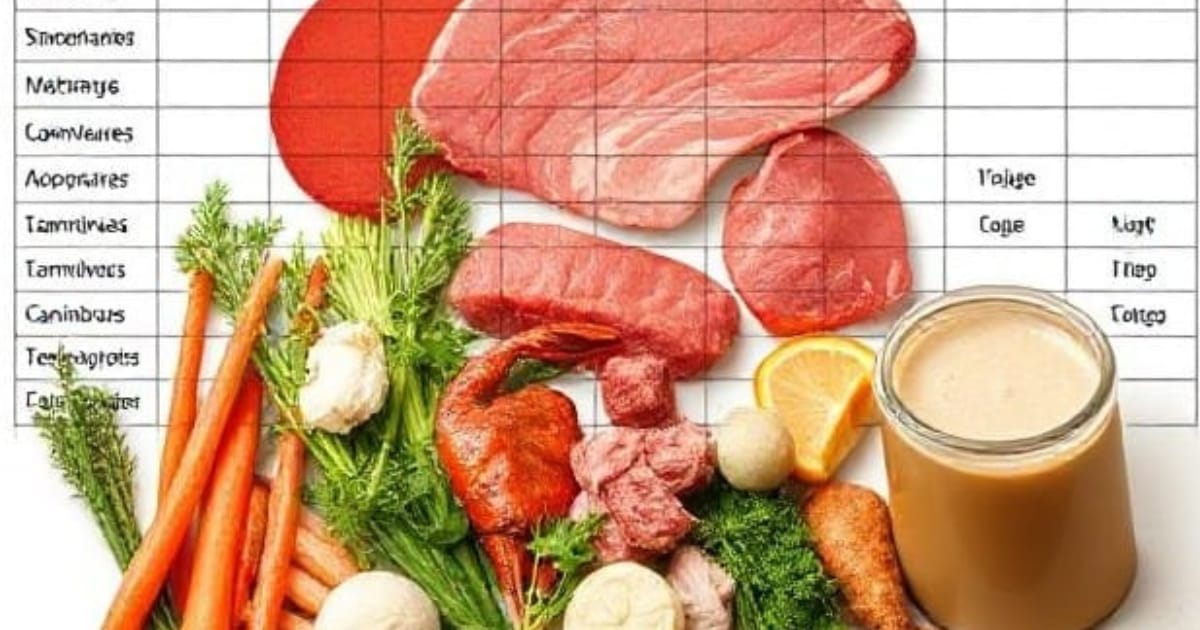The Carnivore Diet has become extremely popular as a meat-only diet, that eliminates all plant-based foods and all carbohydrates. Supporters of the Carnivore Diet claim benefits including weight loss, improved mental clarity, and decreased inflammation.
But to maximize your results, it’s important to know precisely what foods to eat and what foods to avoid. This article contains a full Carnivore Diet food list to get you the most out of your health and fitness goals.
What is the Carnivore Diet?
The Carnivore Diet is a restrictive version of a low-carb/high-fat diet comprised solely of animal products. Unlike following a keto diet, which allows some plant-based foods, the Carnivore Diet eliminates all fruits, vegetables, grains, and legumes—focusing solely on eating things like meat, fish, eggs, and dairy.
Advocates of the diet say it reduces inflammation, quells digestive complaints, and may help with weight loss by removing plant toxins and anti-nutrients.
What Foods Are Allowed on the Carnivore Diet
If you want to maximize the benefits of the Carnivore Diet, focus on the most nutrient-dense animal products. Here is a comprehensive list of the best foods to eat.
carnivore diet food list
1. Meat (Main Source)
- Beef- Ribeye, sirloin, ground beef, brisket, short ribs, chuck roast, filet mignon.
- Lamb- Lamb chops, ground lamb, leg of lamb, or lamb rib.
- Pork- Pork chops, pork belly, bacon, ground pork, or pork rib.Game Meat- Venison, elk, bison, wild boar, or rabbit.
- Organ Meats (Very nutrient dense)- Liver, kidney, heart, brain, bone marrow, or tongue.
2. Poultry
- Chicken (thighs, drumsticks, wings, whole chicken).
- Turkey (thighs, drumsticks, ground turkey).
- Duck.
- Quail.
3. Seafood
- Fatty Fish (High in Omega-3s) – Salmon, sardines, mackerel, herring, anchovies
- Lean Fish – Cod, tilapia, haddock, sole, flounder
- Shellfish – Shrimp, lobster, crab, oysters, mussels, clams
- Fish Roe – Caviar, salmon roe
4. Eggs
- Whole eggs (soft-shelled, pasture-raised, or organic)
- Duck eggs, quail eggs
5. Dairy (Optional, Based on Sensitivity)
- Hard cheese (cheddar, gouda, parmesan, pecorino)
- Soft cheese (brie, camembert, cream cheese)
- Heavy cream
- Butter & ghee
6. Animal Fat
- Beef
- tallow
- Pork lard
- Duck fat
- Butter
- Ghee
7. Bone Broth
- Homemade bone broth from beef, chicken (or fowl), or fish for collagen and minerals
Foods You Shouldn’t Eat on the Carnivore Diet
The Carnivore Diet is simple enough, aside from a few types of foods that can cause activity, gut problems, or simply stall your progress.
1. Plant-Based Foods (Avoid Completely)
Vegetables (broccoli, spinach, kale, carrots, and so on…)
Fruits (apples, bananas, berries, oranges…)
Legumes (beans, lentils, chickpeas, peanuts)
Grains (wheat, rice, oats, corn, quinoa…)
Nuts & seeds (almonds, walnuts, chia seeds, flax seeds…)
2. Processed & High Sugar Foods
Sugary foods (cakes, candy, ice cream, soda…)
Artificial sweeteners (aspartame, sucralose, saccharin…)
Processed meats that contain any additives (hot dogs, deli meats with nitrates…)
Vegetable & seed oils (canola, soybean, corn, sunflower oil…)
3. Dairy (If Intolerant)
Milk (lots of lactose that can upset your gut)
Yogurt (lactose and maybe even added sugar…)
4. Alcohol & Beverages
Beer, wine, and liquor (contains carbs and additives)
Sugar-sweetened drinks (fruit juice, soda, flavored water)
Coffee & tea (some followers prefer no caffeine altogether)
Sample Carnivore Diet Meal Plan
Here is a basic meal plan to help you format your day upon the Carnivore Diet:
Day 1
Breakfast: Scrambled eggs in butter with bacon
Lunch: Ribeye steak with bone marrow
Dinner: Salmon filet with shrimp in ghee
Day 2
Breakfast: Omelet with cheddar and sausage
Lunch: Lamb chops and beef liver
Dinner: roasted duck with buttered scallops
Day 3
Breakfast: Hard-boiled eggs with pork belly
Lunch: Grilled chicken thighs and bone broth
Dinner: Bison ribeye with grilled shrimp
Carnivore Diet Hacks for Optimal Results
Prioritize Fatty Cuts: Eating fatty meat is great for prolonged energy and fullness.
Stay Hydrated: Drink plenty of water and possibly electrolytes.
Eat Organ Meats: These meats are filled with vitamins and minerals that are essential for health.
Monitor Your Health: Monitor how you are feeling in terms of energy, digestion, and mental acuity.
Try Dairy: Dairy is tolerated by some, but not by others.
Note
The Carnivore Diet is a sustainable method of enhancing your health by not eating plant-based foods and consuming animal-based products that are nutrient-dense.
In the accompanying food list, eating meat provides the most optimal healthy benefits, whether it be weight loss, digestion, and mental acuity. Eat good quality meat, avoid processed foods, and listen to your own body’s needs!
FAQs
1. What foods can you consume on the carnivore diet?
Animal-based foods such as beef, pork, lamb, poultry, seafood, eggs, dairy (if tolerated), animal fats, and bone broth are acceptable to consume. You must avoid all plant-based foods, grains, sugars, and processed foods.
2, What do I eat for the 7 full-day meal plan on the carnivore diet?
- Day 1: Scrambled eggs, bacon, ribeye steak, salmon
- Day 2: Omelet with cheese, lamb chops, roasted duck
- Day 3: Hard-boiled eggs, grilled chicken thighs, bison ribeye
- Day 4: Pork belly, beef liver, sardines
- Day 5: Ribeye steak, shrimp, bone broth
- Day 6: Ground beef patties, cheddar cheese, salmon
- Day 7: Egg omelet, lamb ribs, buttered scallops
3. What is the 30-day carnivore diet?
It’s a strict plan where you only eat animal-based foods for 30 days. The goal of the diet is to help with metabolism resetting, reducing inflammation, and digestion improvement.
4. What does the 80/20 rule mean on the carnivore diet?
It specifies that 80% of what you eat should contain fatty meats and animal-based fats, and the other 20% can be non-fatty meats or dairy.
5. Can I have rice on the carnivore diet?
No. Rice is a grain, which you want to avoid.
6. Can I have milk on a carnivore diet?
Generally, you want to avoid milk due to the lactose, but some people who tolerate dairy can have either full-fat or even raw milk.















